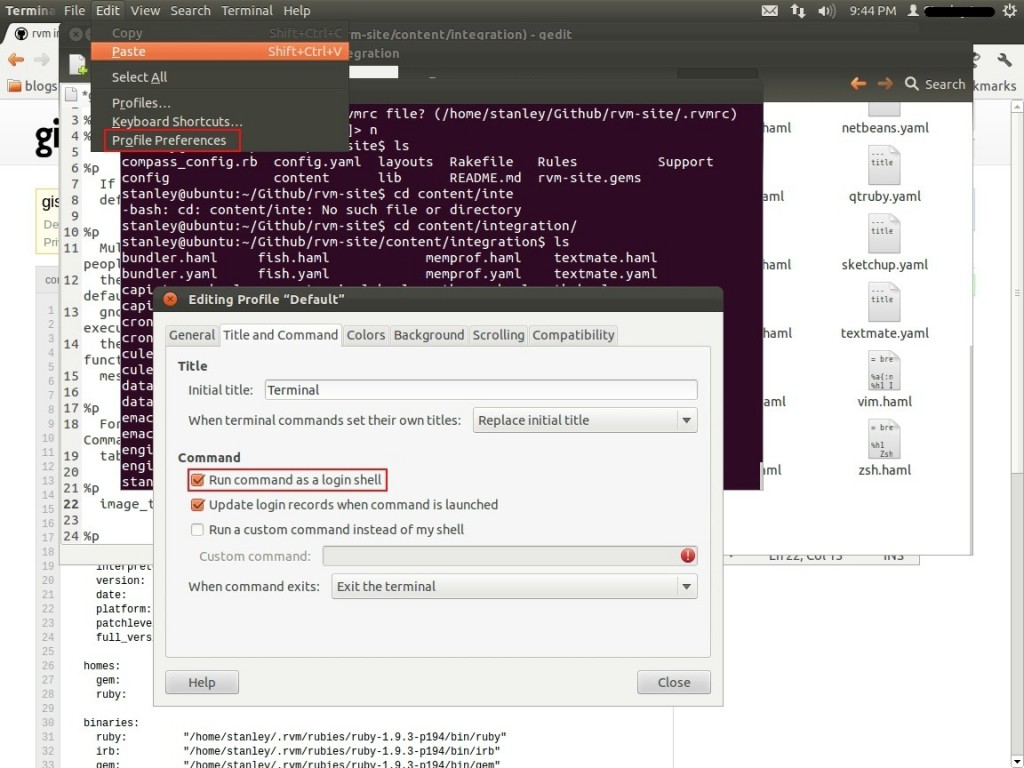Here we will cover how to create a Vagrant Box. In this case I want to install chef-solo over an Ubuntu/trusty image. You can clone all work in this post from this repo https://github.com/jlebrijo/trusty64-chef.
mkdir trusty64-chef cd trusty64-chef/ rbenv local 2.1.2 gem install bundle
Create Gemfile:
source 'https://rubygems.org' gem 'vagrant', github: 'mitchellh/vagrant', tag: 'v1.6.4' gem 'knife-solo'
Install gems:
bundle bundle install --binstubs .bundle/bin
Create Vagrantfile: ‘vagrant init’. In order to take access to the image, add to Vagrantfile:
config.vm.network :public_network, bridge: "wlan0", ip: "192.168.10.25"
Start box: ‘vagrant up’. Install Chef in the image:
knife solo prepare vagrant@192.168.10.25 ## password: vagrant
Update Ubuntu:
vagrant ssh sudo apt-get update
Package the Box: `vagrant package –base trusty64-chef_default_1409751631640_92694 –output trusty64-chef.box`
Add to local Box list: `vagrant box add lebrijo/trusty64-chef package.box`
Upload the box to a HTTP server: `scp trusty64-chef.box lebrijoc@files.lebrijo.com:www/lebrijo.com/files`
Create an account and entry in vagrantcloud.com [lebrijo/trusty64-chef](https://vagrantcloud.com/lebrijo/trusty64-chef)

